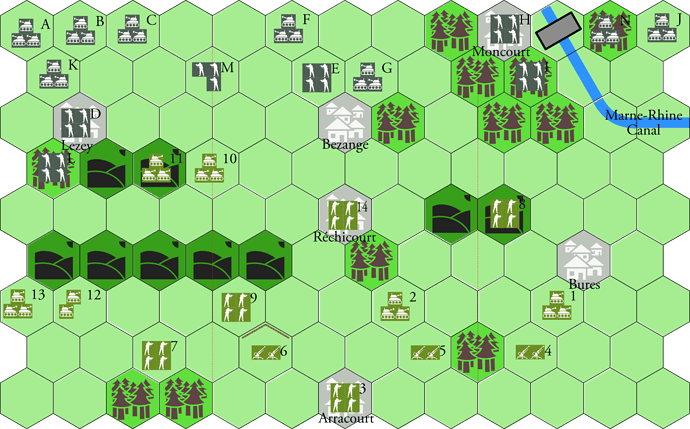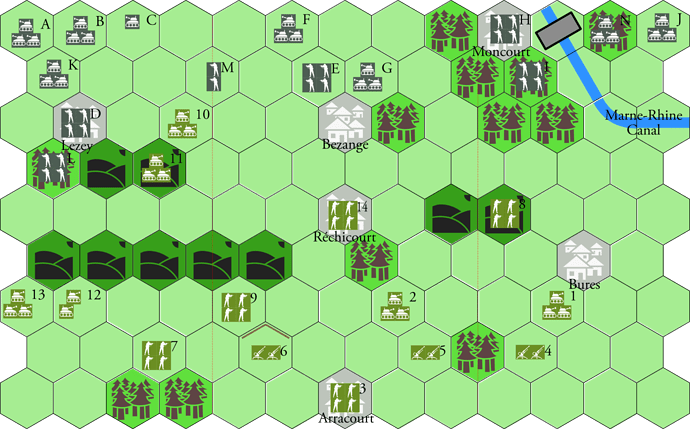@Griffster77 asked for a die roll:
Attack for 10 on M: 3d6: 5 + 6 + 2 = 13
I think that’s one casualty to M and one retreat - @RossM, NE or NW?
NOrth East
@Griffster77 asked for a die roll:
Well I’ll perform an Armour overrun with 10 by moving NW 1 space and attacking M again
3d6: 3 + 4 + 5 = 12
@Griffster77 asked for a die roll:
So thats one grenade hit on M
11 will fire on C 3d6: 4 + 1 + 4 = 9
Two grenade hits on C.
Nothing else can attack, I believe.
Let’s play firefight please.
OK, so pick four units not adjacent to an enemy which may fire (+1 die) but not move.
(People who know the rules, please check that I am talking sense.)
Can B draw line of sight to 10?
Looks clear to me.
Ok. D B C and F please
My calculations:
D - can fire on 10 (range 2 = 2) or 11 (range 2 = 2 dice, -1 for battling uphill = 1)
B - can fire on 10 (3 dice) or 11 (3 dice, -1 for battling uphill = 2)
C - same as B
F - M blocks your LoS to 10, 11 is out of range.
E could fire on 10 but only with 1 die.
L LoS to 10 and 11 (and 13 and 14) is blocked by the hills.
K could fire on 10 with 3 dice.
Ok. But F is activated in case the tanks are forced to retreat. Is that not allowed?
Yes I think so
I don’t understand but I believe you can still choose to “order” a unit even if it can’t fire. Go ahead and roll; you don’t have to pre-commit your targets. Rolls of 3 or 4 will kill an armour figure, 6 causes a retreat.
Battles are resolved sequentially so I see no reason why he can’t do that.
Aha I see, in case LoS becomes clear as a target retreats. Sure.

